Scalp Micropigmentation for Alopecia: A Transformative Solutions for Hair Loss
Scalp Micropigmentation for Alopecia. Welcome to our concise guide on scalp micropigmentation for alopecia. In this blog, we’ll explore how scalp micropigmentation offers a promising solution for individuals grappling with hair loss due to alopecia. Join us as we uncover the transformative benefits of this innovative procedure and address common questions about SMP for alopecia.
Below we have set out the key points that we are going to look at in this post.
- Understanding Alopecia: We’ll begin by delving into the intricacies of alopecia, a condition characterized by hair loss that can affect individuals of all ages and genders. From its different types to potential causes and impact on self-esteem, this section will shed light on what alopecia entails and how it can affect those living with it.
- Exploring Scalp Micropigmentation: Next, we’ll introduce you to scalp micropigmentation, a revolutionary cosmetic procedure that has gained popularity for its effectiveness in addressing hair loss. You’ll learn about the process involved in SMP, how it works to simulate the appearance of hair follicles, and the various benefits it offers for individuals with alopecia.
- Benefits of Scalp Micropigmentation Compared to Other Treatments: In this section, we’ll compare scalp micropigmentation with other hair loss treatments, such as hair transplants, medications, and topical solutions. By examining the advantages of SMP, including its non-invasive nature, natural-looking results, and long-term durability, you’ll gain insight into why it’s often preferred by those seeking a reliable solution for alopecia.
- Scalp Micropigmentation for Alopecia FAQ: Finally, we’ll address common questions and concerns about scalp micropigmentation for alopecia. From the procedure’s safety and effectiveness to its cost and maintenance requirements, we’ll provide answers to help you make informed decisions about whether SMP is the right choice for managing your alopecia.
By the end of this blog, we hope you’ll have a comprehensive understanding of scalp micropigmentation for alopecia and feel empowered to explore this innovative solution as part of your hair restoration journey. Let’s embark on this enlightening exploration together.
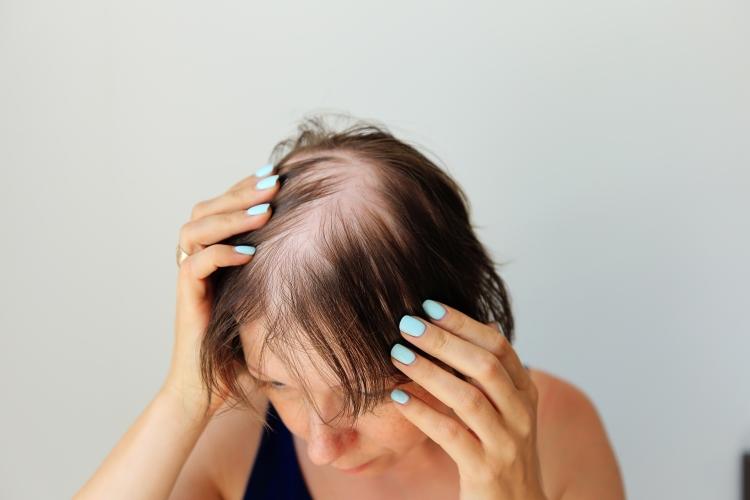
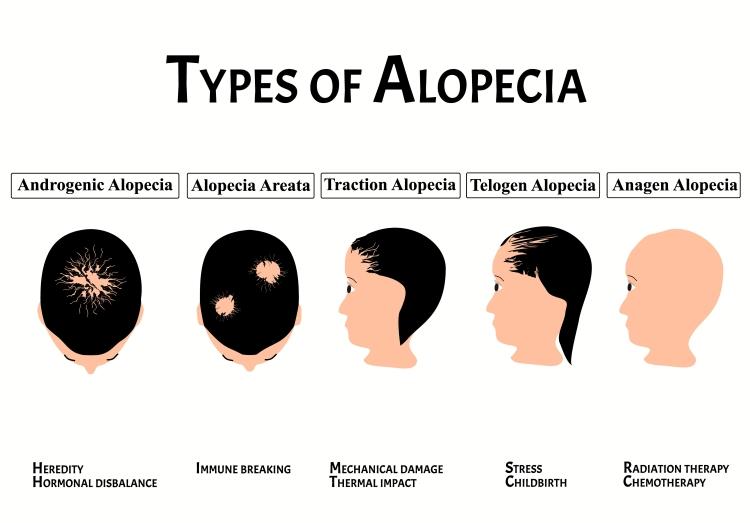
What is Alopecia?
Alopecia is a medical term used to describe hair loss or baldness. It can affect various parts of the body, but it is most commonly associated with the scalp. There are several types of alopecia, each with its own causes, symptoms, and treatment options. Some of the most common types include:
Alopecia is a medical term used to describe hair loss or baldness. It can affect various parts of the body, but it is most commonly associated with the scalp. There are several types of alopecia, each with its own causes, symptoms, and treatment options. Some of the most common types include:
- Androgenetic alopecia: Also known as male-pattern or female-pattern baldness. This type of alopecia is the most common cause of hair loss. It is characterized by a gradual thinning of hair, typically at the top of the scalp or along the temples in men, and diffuse thinning across the crown in women. Androgenetic alopecia is believed to be influenced by genetic factors and hormonal changes, particularly the hormone dihydrotestosterone (DHT).
- Alopecia areata: Alopecia areata is an autoimmune condition that causes sudden, patchy hair loss. It occurs when the body’s immune system mistakenly attacks the hair follicles. Leading to hair loss in small, round patches on the scalp or other areas of the body. In some cases, alopecia areata can progress to total hair loss (alopecia totalis) or loss of all body hair (alopecia universalis).
- Alopecia universalis: This is a rare and severe form of alopecia areata that results in complete hair loss on the scalp and body. Including eyebrows, eyelashes, and other body hair. It is thought to be caused by an autoimmune reaction that targets all hair follicles.
- Telogen effluvium: Telogen effluvium is a temporary form of hair loss. It occurs when a significant number of hair follicles enter the resting (telogen) phase of the hair growth cycle prematurely. It can be triggered by various factors. Including stress, illness, hormonal changes, medications, or nutritional deficiencies. The hair typically regrows once the underlying cause is addressed.
- Traction alopecia: Traction alopecia is caused by repetitive pulling or tension on the hair follicles. This is often due to hairstyles that place excessive stress on the hair. Including tight ponytails, braids, or hair extensions. Over time, this can lead to gradual hair loss, particularly along the hairline or in areas where tension is applied.
Alopecia Treatment Options – Other Than Scalp Micropigmentation
Treatment for alopecia varies depending on the type and underlying cause. Options may include medications, such as minoxidil or finasteride. Furthermore, corticosteroid injections, topical creams or foams, platelet-rich plasma (PRP) therapy, or hair transplant surgery are alos used.
It’s essential for individuals experiencing hair loss to consult with a dermatologist or healthcare provider to determine the most appropriate treatment plan based on their specific condition and needs. Additionally, support groups and counseling may be beneficial for individuals dealing with the emotional impact of hair loss.
What is SMP?
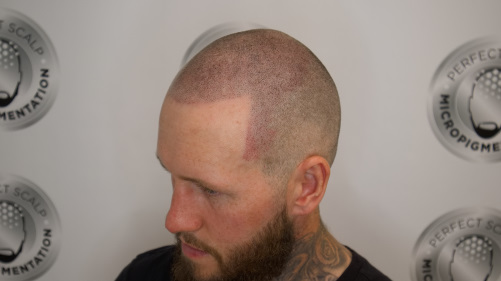
Scalp micropigmentation (SMP) is a non-surgical cosmetic procedure that involves the application of specialized pigments to the scalp. In order to create the appearance of hair follicles. It is commonly used to camouflage baldness, thinning hair, or scarring on the scalp. SMP gives the illusion of a fuller head of hair or a closely shaved hairstyle.
During a scalp micropigmentation procedure, a trained technician uses a fine needle or micro-needle to deposit pigment into the upper layers of the skin on the scalp. The technician carefully replicates the natural pattern and density of hair follicles. Carefully matching the color and shape of the existing hair or desired hairline. This process creates the appearance of a closely cropped or buzzed hairstyle. Which can help conceal bald spots, receding hairlines, or areas of thinning hair.
Scalp micropigmentation is suitable for both men and women of all ages and hair types. It is a versatile solution for various types of hair loss. Including alopecia, male-pattern baldness, female-pattern hair loss, and scarring from surgeries or accidents. SMP can also be used to enhance the appearance of hair transplants by adding density and definition to the treated areas.
One of the key benefits of scalp micropigmentation is its ability to provide immediate and long-lasting results. Unlike topical treatments or hair restoration surgeries, SMP does not require downtime for recovery. Additionally the results are visible immediately after the procedure. The pigments used in SMP are specifically formulated to be fade-resistant and long-lasting. However, periodic touch-ups may be needed to maintain the desired appearance over time.
Additionally, scalp micropigmentation is a low-maintenance solution for hair loss. Once the initial treatment is complete, minimal upkeep is required to maintain the results. Regular grooming and shaving of the scalp can help preserve the appearance of the pigmented follicles and ensure a natural-looking result.
Overall, scalp micropigmentation offers a safe, effective, and natural-looking solution. It is suitable for individuals seeking to restore the appearance of a fuller head of hair or conceal baldness and thinning. However, it’s essential to choose a reputable and experienced provider to ensure optimal results and minimize the risk of complications. Consulting with a qualified technician can help determine if scalp micropigmentation is the right option for addressing your specific hair loss concerns.
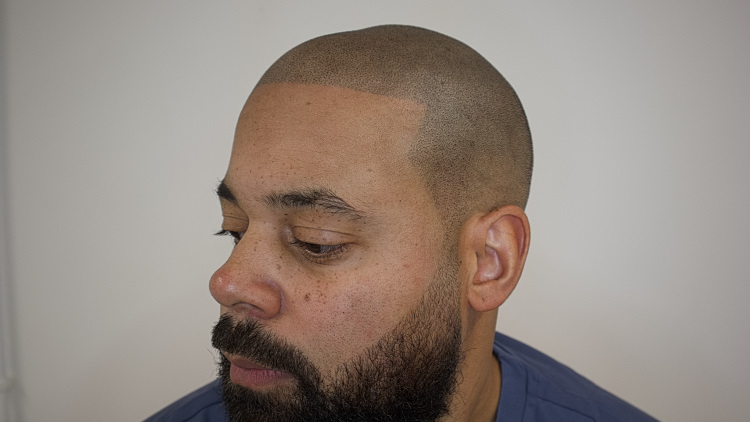
Scalp Micropigmentation for Alopecia
Scalp micropigmentation (SMP) is an excellent treatment option for individuals with alopecia for several reasons:
- Camouflage of Bald Patches: SMP can effectively camouflage bald patches or areas of thinning hair caused by alopecia areata or other forms of alopecia. By depositing pigment into the scalp to mimic the appearance of hair follicles. SMP creates the illusion of fuller hair density, helping to conceal areas of hair loss and restoring a more natural-looking scalp.
- Natural-Looking Results: When performed by a skilled and experienced technician, scalp micropigmentation can produce incredibly natural-looking results. The technician carefully replicates the natural pattern, direction, and density of hair follicles. Blending seamlessly with the existing hair or desired hairline. This attention to detail ensures that the SMP treatment appears indistinguishable from natural hair growth. Even upon close inspection!
- Versatility: SMP is a versatile solution that can be customized to meet the unique needs and preferences of each individual with alopecia. Whether the goal is to create the appearance of a closely cropped buzz cut. Or to add density and definition to thinning areas. SMP can be tailored to achieve the desired outcome. Additionally, SMP can be combined with other hair restoration treatments. Including hair transplants or topical therapies, to enhance overall results.
- Minimal Maintenance: Unlike some other hair restoration treatments, SMP requires minimal ongoing maintenance. Once the initial treatment is complete, there is no need for daily application of topical products or regular visits for maintenance procedures. With proper care and occasional touch-ups as needed, SMP can provide long-lasting results that require minimal effort to maintain.
- Non-Invasive: SMP is a non-surgical procedure that does not require incisions, anesthesia, or downtime for recovery. This makes it a safe and convenient option for individuals with alopecia who may prefer to avoid invasive surgical procedures. Or for those who may not be candidates for hair transplant surgery due to medical reasons or personal preferences.
- Psychological Benefits: Beyond its physical effects, SMP can also have significant psychological benefits for individuals with alopecia. By restoring the appearance of a fuller head of hair and reducing the visibility of baldness or thinning. SMP can improve self-confidence, self-esteem, and overall quality of life for individuals living with alopecia.
Overall, scalp micropigmentation can be an excellent treatment option for individuals with alopecia, offering natural-looking results, versatility, minimal maintenance, and psychological benefits. However, it’s essential to consult with a qualified and experienced SMP technician to discuss individual goals, expectations, and suitability for treatment.
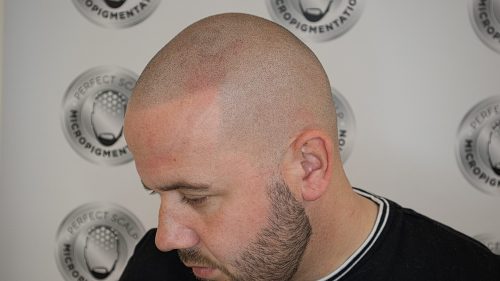
SMP Compared Against Other Alopecia Treatment Options
When comparing scalp micropigmentation (SMP) to other treatments for alopecia, it’s essential to consider various factors. Including effectiveness, invasiveness, cost, maintenance, and suitability for individual needs. Let’s explore how SMP stacks up against other common treatments for alopecia:
- Effectiveness:
- SMP: Scalp micropigmentation is highly effective at camouflaging bald patches or areas of thinning hair. by depositing pigment into the scalp. MimicIng the appearance of hair follicles. It provides immediate results and can effectively conceal hair loss, creating the illusion of a fuller head of hair.
- Other Treatments: Other treatments for alopecia, such as medications (e.g., minoxidil, finasteride), topical treatments, hair transplant surgery, or low-level laser therapy. May vary in effectiveness depending on the individual’s response, the severity of hair loss, and the underlying cause of alopecia.
- Invasiveness:
- SMP: Scalp micropigmentation is a non-invasive procedure that does not require incisions, anesthesia, or downtime for recovery. It involves the application of specialized pigments to the scalp’s surface using fine needles. Making it a safe and comfortable option for individuals with alopecia.
- Other Treatments: Some treatments for alopecia, such as hair transplant surgery, are invasive procedures that involve incisions, anesthesia, and a period of recovery. While effective, these treatments carry greater risks and may not be suitable for everyone.
- Cost:
- SMP: The cost of scalp micropigmentation can vary depending on factors such as the extent of treatment, the skill and experience of the technician, and the geographic location. While SMP typically requires an initial investment. It offers long-term cost savings compared to other treatments that require ongoing maintenance or repeat procedures.
- Other Treatments: The cost of other treatments for alopecia, such as medications, topical treatments, or hair transplant surgery, can also vary widely. Some treatments may require ongoing expenses for prescription refills, follow-up appointments, or maintenance procedures.
- Maintenance:
- SMP: Scalp micropigmentation requires minimal ongoing maintenance once the initial treatment is complete. Occasional touch-up sessions may be needed to maintain the desired appearance over time. However, daily maintenance is not typically required.
- Other Treatments: Other treatments for alopecia may require ongoing maintenance. Such as daily application of topical products, regular follow-up appointments, or periodic treatments to maintain results.
- Suitability:
- SMP: Scalp micropigmentation is suitable for individuals with various types and stages of alopecia. Including alopecia areata, androgenetic alopecia, and scarring alopecia. It can be customized to meet individual needs and preferences. Providing natural-looking results for both men and women.
- Other Treatments: Other treatments for alopecia may be more suitable for specific types or stages of hair loss. For example, medications like minoxidil and finasteride are commonly used to treat male-pattern baldness, while hair transplant surgery may be recommended for individuals with advanced hair loss who are seeking a permanent solution.
Ultimately, the choice between scalp micropigmentation and other treatments for alopecia depends on individual preferences, goals, budget, and suitability. Consulting with a hair restoration specialist can help individuals evaluate their options and determine the most appropriate treatment plan based on their specific needs and circumstances.
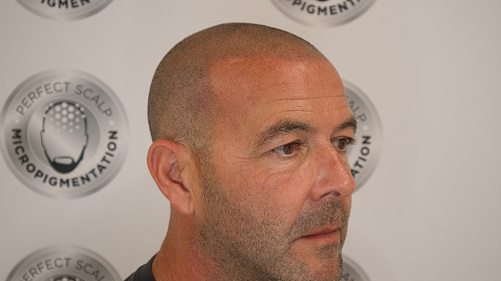
Frequently Asked Questions About Scalp Micropigmentation (SMP) for Alopecia
- What is scalp micropigmentation (SMP)? Scalp micropigmentation is a non-invasive cosmetic procedure. It involves the application of specialized pigments to the scalp to create the illusion of hair follicles. It is commonly used to camouflage bald patches, thinning hair, or scarring on the scalp, providing the appearance of a fuller head of hair.
- Is SMP suitable for all types of alopecia? Yes, SMP can be effective for various types of alopecia, including alopecia areata, androgenetic alopecia, and scarring alopecia. It can help conceal bald spots, receding hairlines, or areas of thinning hair, providing natural-looking results for both men and women.
- How does SMP differ from other hair restoration treatments? SMP differs from other hair restoration treatments, such as medications, topical treatments, or hair transplant surgery. As SMP does not involve surgery or the use of medications. Instead, SMP relies on the application of pigments to the scalp’s surface to create the appearance of hair follicles. Offering immediate results and minimal maintenance requirements.
- Is SMP a permanent solution for alopecia? While SMP provides long-lasting results, it is not considered a permanent solution for alopecia. Over time, the pigments used in SMP may fade slightly, requiring occasional touch-up sessions to maintain the desired appearance. However, with proper care and maintenance, SMP can provide years of natural-looking results.
- Is SMP painful? Most individuals find SMP to be a relatively comfortable procedure, with minimal discomfort. The sensation during the procedure is often described less painfull to getting a tattoo. Or experiencing a slight tingling or scratching sensation on the scalp. Topical numbing creams are typically applied before the procedure to minimize any discomfort.
- How long does SMP treatment take? The duration of SMP treatment can vary depending on the extent of the area being treated and the desired outcome. Generally, SMP treatment sessions can last up to 2 hours. Multiple sessions often required to achieve optimal results. The exact number of sessions needed will be determined during the initial consultation with a qualified SMP technician.
- What is the recovery process like after SMP? One of the advantages of SMP is that there is minimal downtime for recovery. Some mild redness or swelling may occur immediately after the procedure. But this typically subsides within a few hours. Most individuals can resume their normal activities immediately after SMP treatment, with no need for downtime or post-procedure care.
- Are there any risks or side effects associated with SMP? While SMP is generally considered safe. Some potential risks and side effects may occur, including temporary redness, swelling, or discomfort at the treatment site.
- How do I choose a qualified SMP technician? When choosing an SMP technician, it’s essential to research their credentials, training, and experience. Look for technicians who are certified by reputable organizations and have a portfolio of before-and-after photos demonstrating their work. Additionally, schedule a consultation to discuss your goals, expectations, and any questions or concerns you may have before proceeding with treatment.
- Can SMP be combined with other hair restoration treatments? Yes, SMP can be combined with other hair restoration treatments. Such as hair transplant surgery or topical therapies, to enhance overall results. Your SMP technician can recommend a personalized treatment plan.
Scalp micropigmentation for alopecia can be a transformative solution. Providing natural-looking results and boosting self-confidence for individuals living with hair loss. If you’re considering SMP as a treatment for alopecia, consult with a qualified technician to discuss your options and determine if SMP is right for you.
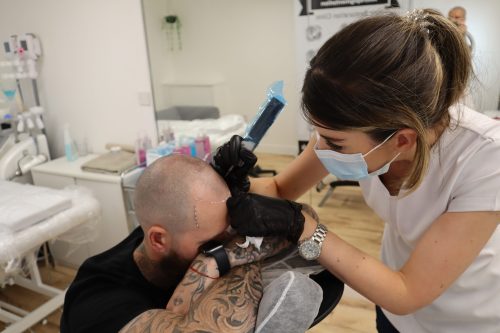
Scalp Micropigmentation for Alopecia: Conclusion
For individuals living with alopecia, finding an effective and suitable treatment can be a significant challenge. While various options exist. Scalp micropigmentation (SMP) emerges as a standout choice for those seeking a non-invasive, natural-looking solution to conceal hair loss and restore confidence.
Scalp micropigmentation offers numerous advantages that make it an excellent choice for individuals with alopecia. Its effectiveness in camouflaging bald patches or areas of thinning hair is unparalleled. Providing immediate results and the appearance of a fuller head of hair. By carefully replicating the natural pattern, direction, and density of hair follicles. SMP creates a seamless and indistinguishable illusion that blends seamlessly with existing hair or desired hairline.
Moreover, scalp micropigmentation is a non-invasive procedure that requires no downtime for recovery. Making it a safe and comfortable option for individuals of all ages and hair types. Its minimal maintenance requirements further enhance its appeal, with occasional touch-up sessions needed to maintain long-lasting results.
Scalp micropigmentation is also highly customizable, allowing for individualized treatment plans tailored to meet specific needs and preferences. Whether addressing alopecia areata, androgenetic alopecia, or scarring alopecia. SMP can be adapted to achieve natural-looking results for both men and women.
Overall, scalp micropigmentation stands out as an excellent choice for individuals seeking to restore the appearance of a fuller head of hair, conceal baldness or thinning, and improve self-confidence and quality of life. Its effectiveness, safety, versatility, and minimal maintenance requirements make it a compelling option for those navigating the challenges of alopecia.
If you’re considering scalp micropigmentation as a treatment for alopecia, it’s essential to consult with a qualified and experienced techniciant to discuss your individual goals, expectations, and suitability for treatment. With their expertise and guidance, you can embark on a journey to reclaim your confidence and embrace a renewed sense of self with scalp micropigmentation.

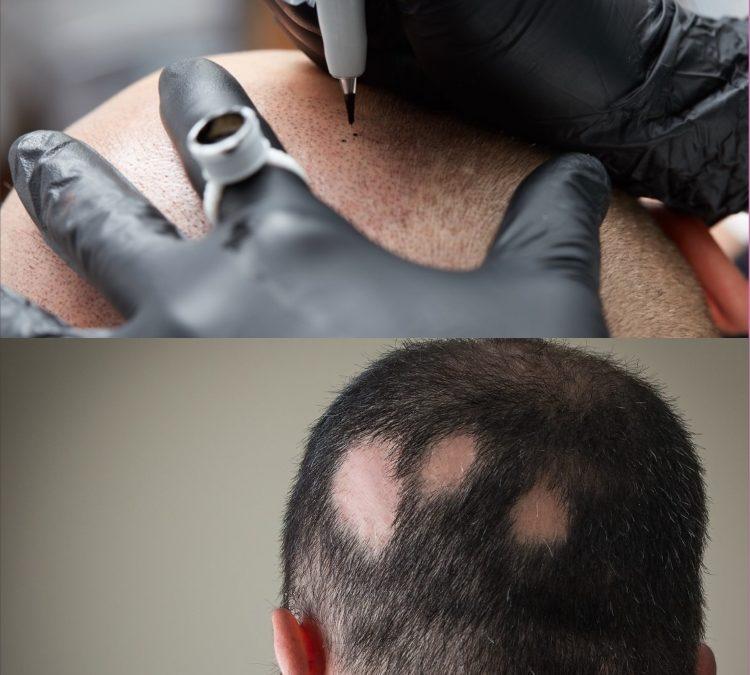
Recent Comments